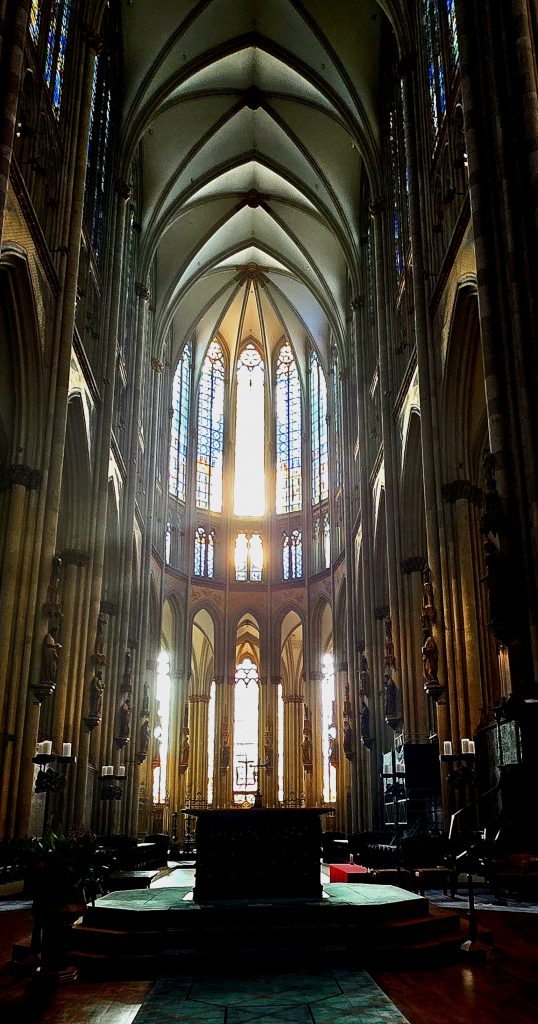
At 7:15 a.m., I had fallen in love. Which is surprising, because I had just gotten up—and I’m not an early bird. But the day before, when I went to the Cologne Cathedral, there were just too many people to take pictures, and I couldn’t find the calm needed to truly take in the building. So the next morning, around seven, I went back.
First impressions: The light! The style! The size! The building is 157 meters high (516 feet), making it the tallest Gothic cathedral—and the third tallest cathedral in the world. This impression is heightened by the shabby postwar architecture of the 1950s that surrounds it: not only is the cathedral so much bigger than everything else, it’s also so much more beautiful.
And Cologne Cathedral is not just huge and beautiful; it is also very old. The groundbreaking ceremony took place in 1248. Then, in 1528, they ran out of money, and for 300 years the unfinished construction site stood like an open wound in Cologne—silent, exposed, and slowly turning rotten. Residents are quoted as saying: “The day the Cathedral of Cologne is finished, the world will come to its end.” From time to time, a bishop would try to rip out some of the cathedral’s Gothic elements and replace them with Baroque architecture. Fortunately, that never worked out—mainly due to a lack of funds—so the half-finished cathedral remained Gothic in style.
When construction resumed in 1823—by then, the church had become a symbol of national unity—it was soon decided that the Gothic style would be continued, with a slight update: it became “neo-Gothic.” That choice gave, and still gives, the Cologne Cathedral a consistent, pure Gothic appearance. Some architects even call it “the perfect cathedral.” All the angles and measurements inside the church are highly repetitive; the eye is surprised neither by anything un-Gothic, nor by any measurement not in harmony with the rest.
It was 7:15 a.m., and everything seemed perfect. I stood there, speechless. All the morning light had come home.
Liked this post? Email me to say hi and I’ll sign you up for more articles like this: send mail
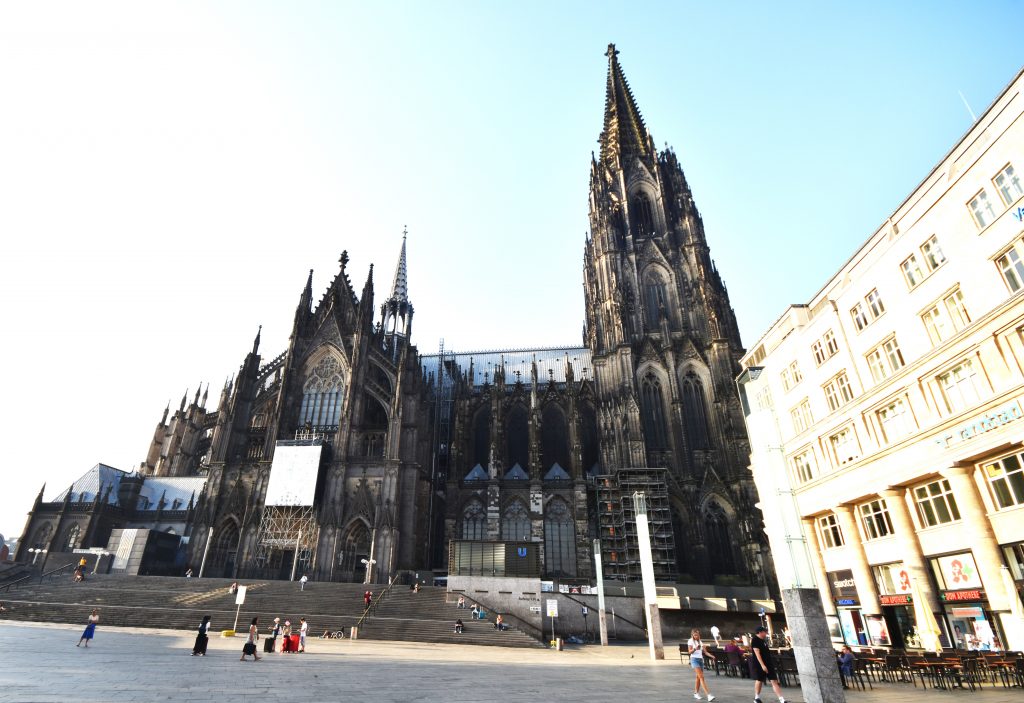
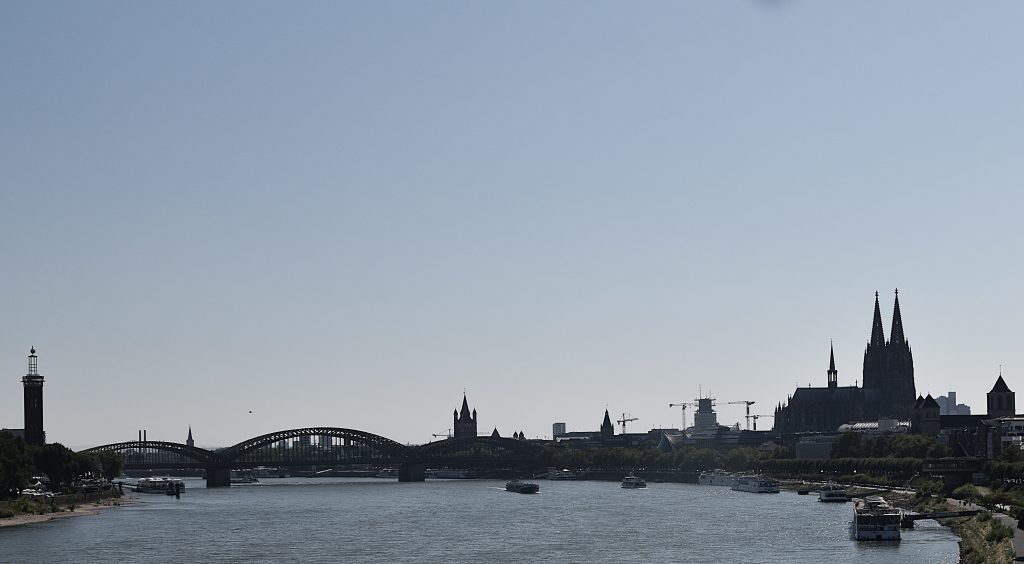
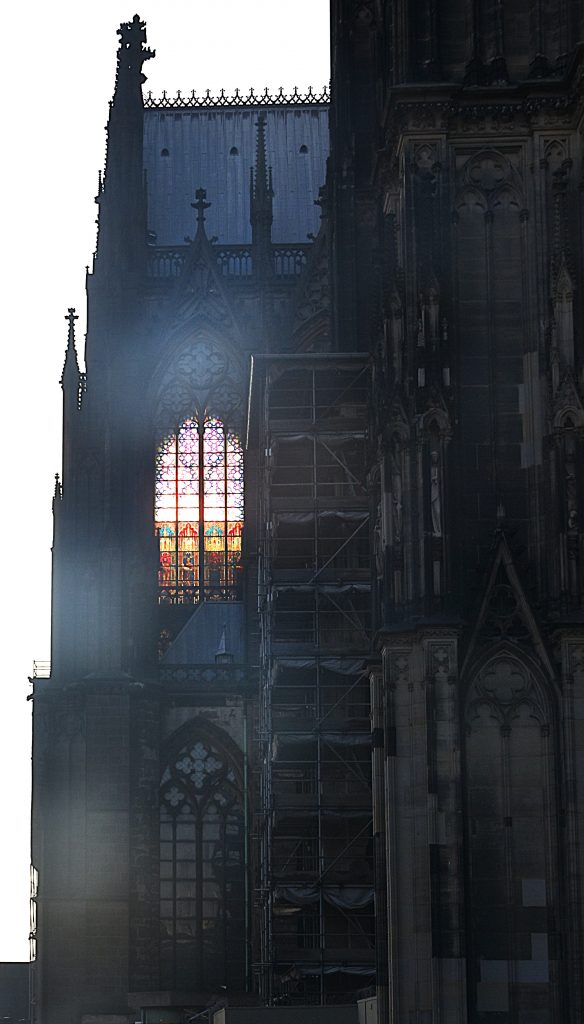
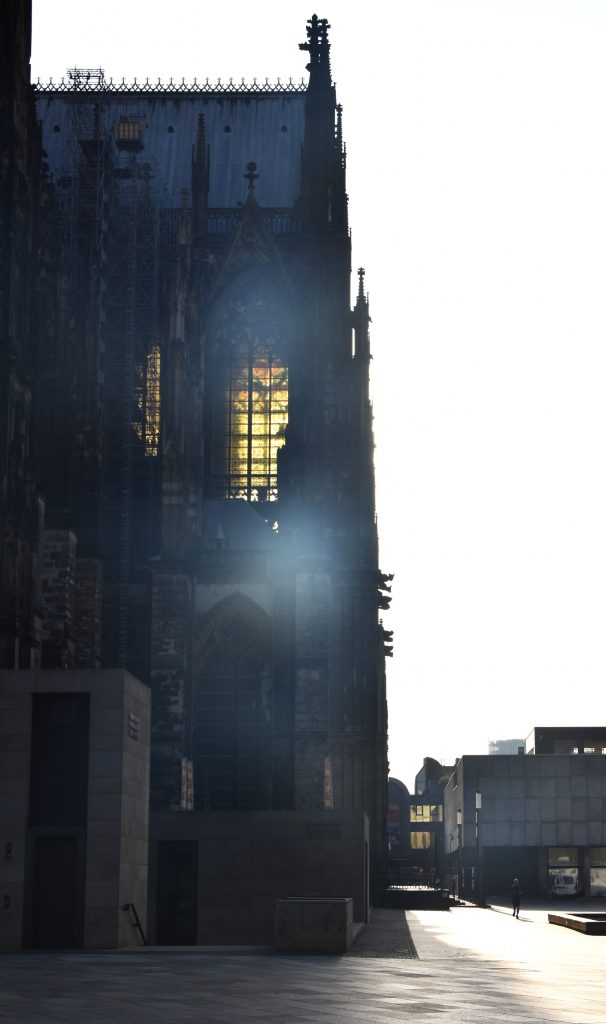
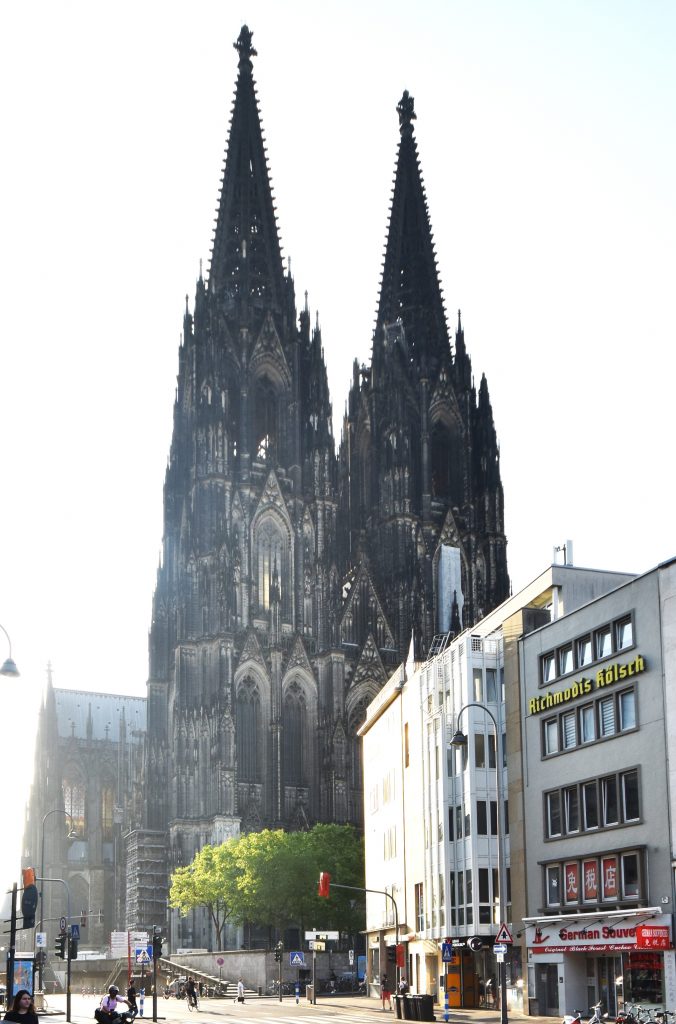
Leave a Reply